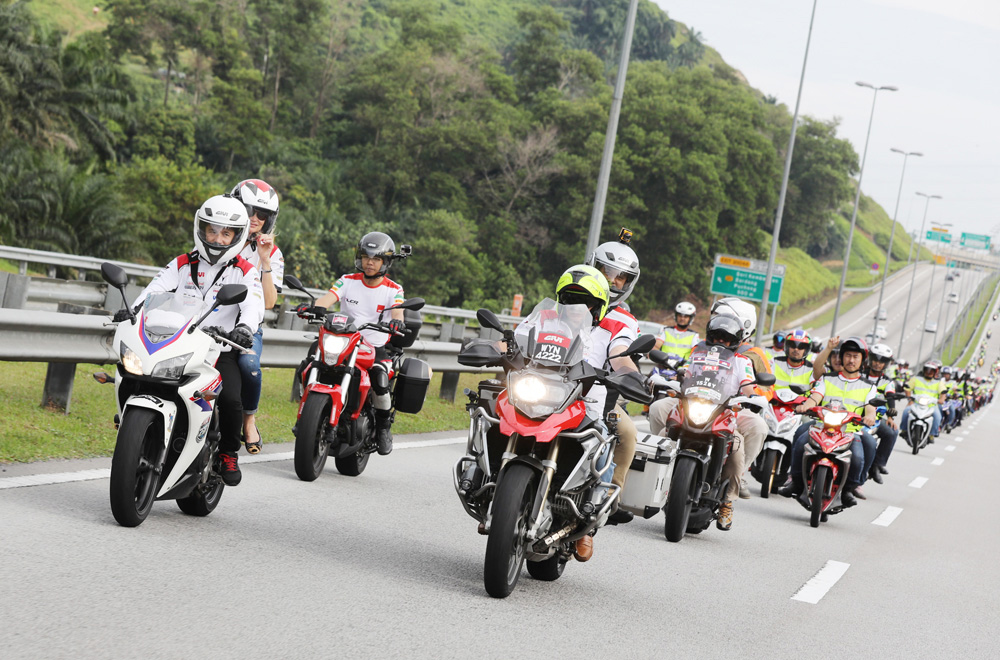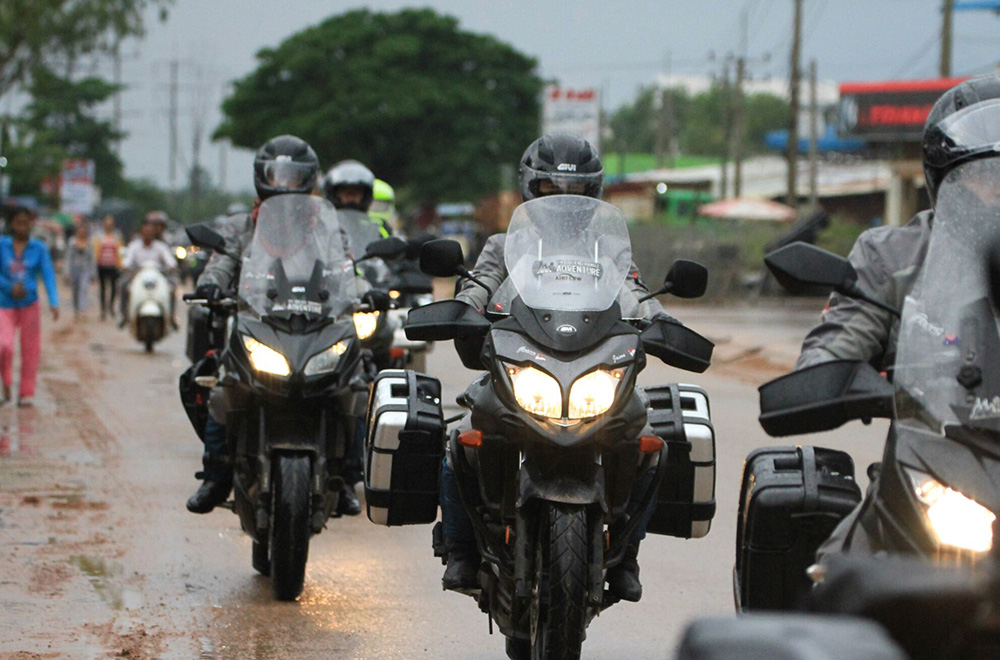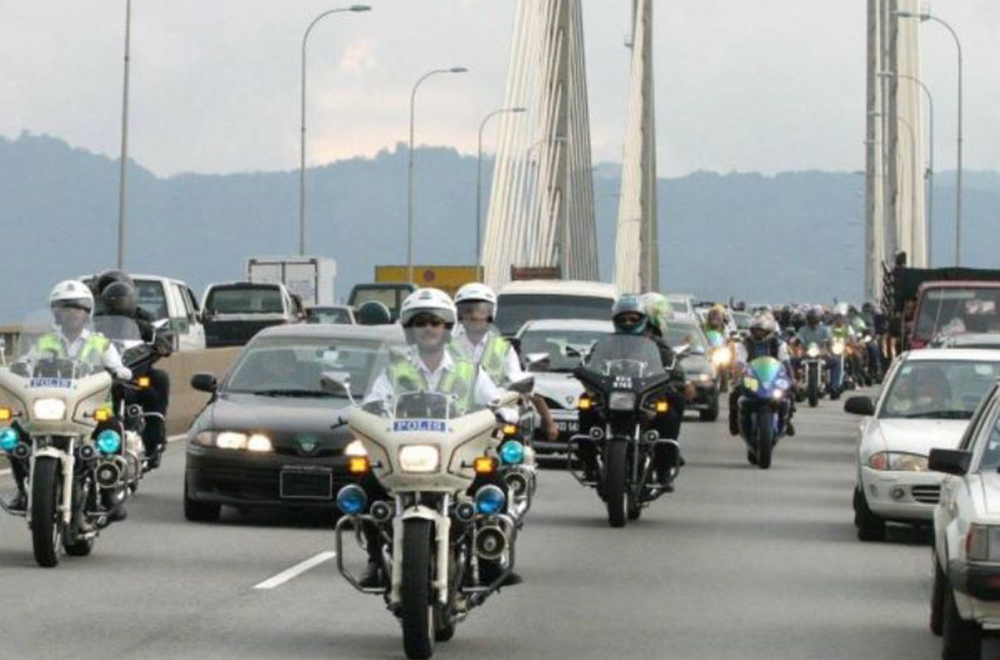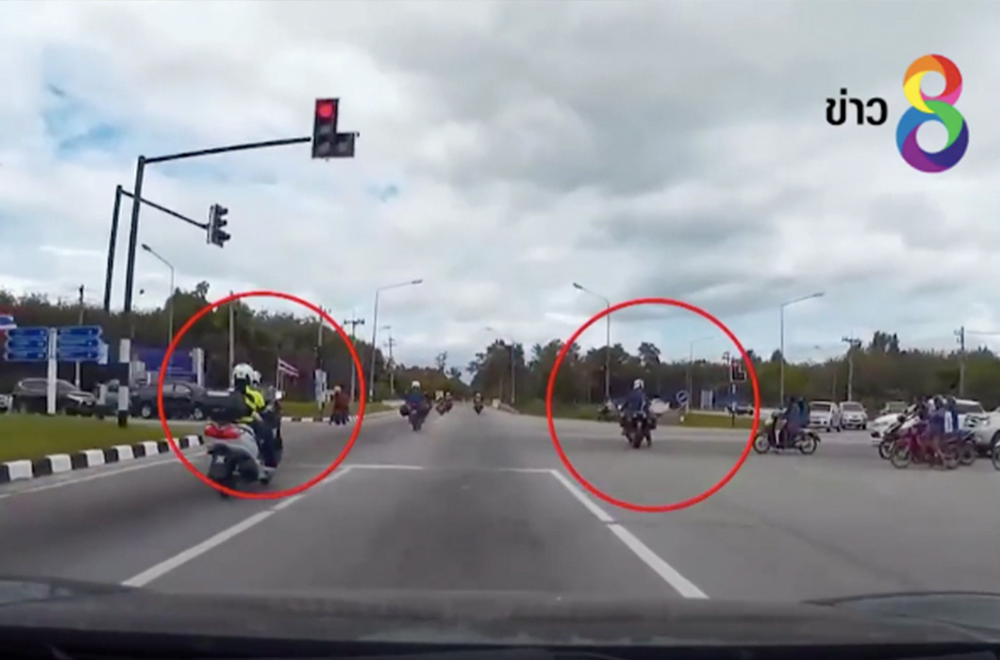GIVI’s Ten Motorcycle Convoy Tips

Joining a motorcycle convoy is always fun for us motorcyclists. The majority of automobile owners never get such a chance in their lifetimes, unless they switch to certain manufacturers or car models. However, a motorcycle convoy is only fun when everyone comes home safe and sound. That is why a set of etiquettes must be adhered to in a convoy.
1. Buddy system
This comes first as it should be arranged before the ride begins.
The buddy system calls for one rider to watch out for another, regardless if they knew each other. It is useful in all convoys including escorted ones but especially important in open convoys. This is to ensure that no one gets left behind (don’t ask us how we learned it the hard way).
The buddy system is also good to pair a new or lower skilled rider to a higher skilled one. This way, the new rider could learn from the more experienced rider. The pairing can be changed as the ride goes on.
Apart from that, it is a great way for each rider to know one another.

2. Follow the leader/marshals
Participants must always follow the lead marshal, unless there he or she needs to leave the convoy or ride ahead. However, he or she must inform the leader or marshal should they need to break away from the group.
3. Ride to “The Pace”
“The Pace” is a set of recommendations handed down by American motojournalist Nick Ienatsch. It says that riding on the streets, particularly in convoys, should be differentiated from riding on the racetrack (surprised?).
It calls for the leader to set the pace – not too fast where everyone goes mad in order to keep up, nor too slow where everyone falls asleep. The leader should try out different paces at the beginning to gauge the levels of those behind him then settling on one throughout the ride.
The leader should slow down on the straights after corners and check behind for his flock. He could also instruct the riders behind to switch positions, so that everyone gets an opportunity to ride through corners without being bogged down by other riders.
You can Google “The Pace” and read the full details in Sport Rider or Motorcyclist or Cycle World magazines.
4. Repeat the leader’s signals
Every rider in the convoy must repeat the leader’s signals. This is because the riders at the back may not see the leader’s signals. Failure to do this is one of the main contributors to crashes in a ride. Imagine if the leader had pointed out a hazard on the road but the guys at the back are not aware of it.

5. Ride according to your own pace
The leader and most of the pack may be speeding up past your comfort level, but you do not have to do so. The job falls on the sweeper (last man) to shepherd you. Riding past your comfort level will you into making mistakes, in addition to tiring you out.
And of course, no racing. If you are really out for a convoy, enjoy the ride and leave competitive riding for the track.
6. Leave room for your buddies
Always leave room for your buddies to “escape.” This is essential to avoid participants from hitting each other.
If you ride double file, it should not be directly next to one another but in a staggered manner, with one bike further in front and the other further back. The same staggered formation should be used in a single-file convoy to allow the rider behind to see the front.
The other aspect is when overtaking other vehicles. Always ride ahead for a few seconds before turning back into your lane to allow those behind to overtake. Swinging in or slowing down immediately after overtaking will leave your friends behind exposed to danger.

7. Follow the leader’s lane
Following where the leader is heading to is one thing, but participants should always use the same lane as the leader, unless for overtaking. Do not swerve into another lane especially when the road gets twisty like at Karak Highway or Sungai Koyan.
8. Escorted convoy
If your ride is escorted (like in GIVI’s annual MotoGP Convoy), let the police officers handle the traffic (including stopping traffic). The traffic police may ask one or two of you to assist in holding up traffic, but they should perform the task first before handing the intersection over to you. Never, ever attempt to stop traffic on your own accord.
9. Non-escorted convoy
Convoys not escorted by the police can be a lot more fun, honestly. But that does not mean you should flout the law. First and foremost, do not stop traffic in any way, not even if you are one of the marshals in the ride.
A non-escorted convoy should be “open,” i.e. let the participants ride at their own paces followed by one or two runners and a sweeper.

10. Leave room for the escorts/marshals
Always watch your mirrors if the convoy is escorted as the traffic police or marshals (runners) need to overtake the group to get into the next position. As such, they need to ride much quicker than the convoy is travelling!

